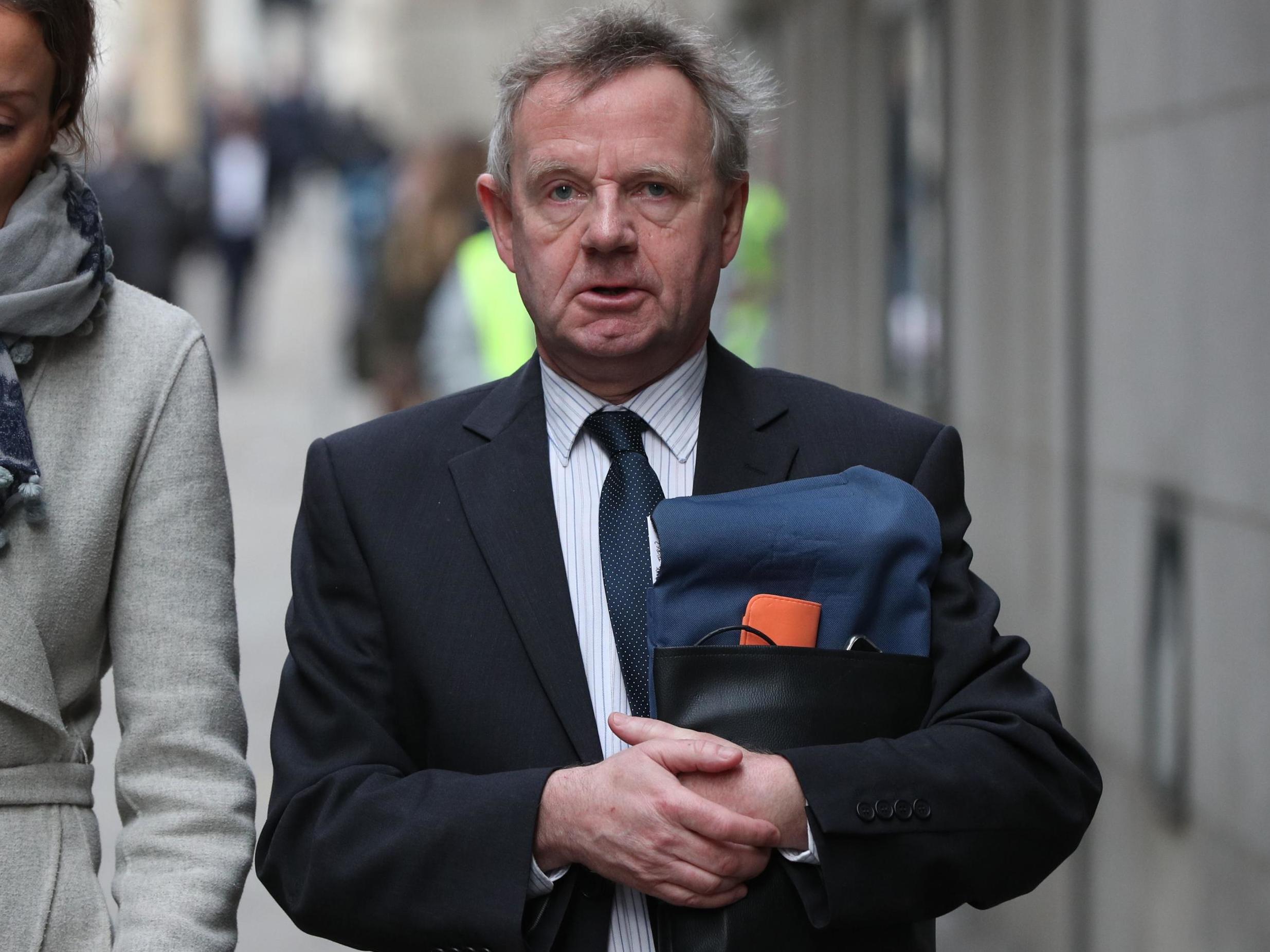Shoreham air disaster trial: video footage shown of jet failing to abort loop before crashing in flames on dual carriageway
Eleven people died in 'massive fireball' after ex-RAF flyer Andrew Hill committed the pilot's 'cardinal sin', court told
Jurors have been shown cockpit video from an air show jet that crashed in a fireball on a dual carriageway, in a bid to explain how failing to abort his loop when too low had been the pilot’s “cardinal sin”.
The video was shown on the second day of the trial of former RAF pilot Andrew Hill, who is accused of gross negligence manslaughter over the 2015 Shoreham Air Show crash when his vintage Hawker Hunter jet plummeted onto the busy A27 just north of the airfield.
Eleven people died in the ensuing “massive fireball”, but Mr Hill “miraculously” survived, the Old Bailey has heard.
The 54-year-old denies 11 counts of manslaughter by gross negligence.
In footage shown to the court, a GoPro camera positioned behind the pilot’s seat records the A27 coming into view through the cockpit windscreen.
The sky reappears as Mr Hill begins his attempt at a “bent loop” manoeuvre. Nothing can be heard other than the sound of the engine before the aircraft beings to judder, flying low along the road and crashing.
Jurors also viewed footage shot by spectators, which shows the plane in the sky attempting the stunt and crashing into the main road, where the fireball engulfed victims who were travelling along the dual carriageway or watching the display from the roadside.
Mr Hill, of Sandon, Buntingford, Hertfordshire, watched the beginning of the footage but lowered his head in the dock when the moment of impact was shown, before looking at the jurors.
Prosecutor Tom Kark QC has told the jury the disaster happened “purely because of pilot error”.
Mr Kark said that on 22 August 2015, the day of the Shoreham crash, the 1950s-era Hawker Hunter had been “in excellent working condition”.
But Mr Hill, the jury was told, had been “too low and slow” during the fatal stunt attempt.
Mr Kark said that at the top of the loop Mr Hill, who had previously “played fast and loose” with safety rules, had been “probably as much as 1,000ft [305m]” below the minimum required height.
“There was a relatively easy escape manoeuvre that could be performed,” Mr Kark added. “Instead, Mr Hill caused the aircraft to commit to the loop.”
Mr Kark told jurors that Jonathon Whaley, a veteran ex-Royal Navy pilot with more than 1,000 hours’ flying experience on Hawker Hunters, had reviewed the video footage.
He had, Mr Kark said, concluded that Mr Hill made a “conscious decision” to commit to the loop despite being too low.
In Mr Whaley’s view this was “a cardinal sin”, the court heard.
“The catalogue of errors placed the aircraft in a position where a crash was inevitable,” Mr Kark told the jury.

Immediately after the crash Mr Hill told emergency services he did not remember or know what happened but felt “terrible” and had been feeling unwell, the court heard.
He was so seriously injured he had to be put in an induced coma. He recovered, but still does not remember events surrounding the crash, the court heard.
Opening the case for the defence, Karim Khalil QC said a correct analysis of Mr Hill’s fatal loop would be that he was not in full control of his actions, possibly because the G-forces experienced while manoeuvring the fast jet had caused him cognitive impairment.
Hill served in the RAF between 1985 and 1994 where he trained to fly, becoming an instructor and fast jet pilot. On leaving the military, he became a British Airways airbus captain.
Mr Khalil said: “Pilot error does not explain what happened here at all. He is not a cavalier pilot and not a pilot who, as is suggested, plays fast and loose [with the rules]. Quite the contrary. He did not deliberately fail to take evasive action.”
The cockpit video was not released to the media.
The trial continues.

